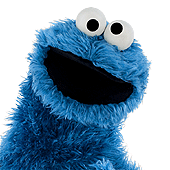Hays
Well-Known Member
- Joined
- Jul 12, 2002
- Messages
- 316
- Reaction score
- 4
The point I'm making that some seem to be missing is that there's less diversity NOW. Minorities that are represented are part of very large groups - Hispanics and African-Americans. US Sesame Street certainly isn't addressing issues like AIDS.
When you bring up examples, keep in mind that you're using the word WAS. I'm not speaking of Sesame Street in the past - that's what I think we need to get back to. When Maria was one of the few Hispanics on TV, not many people had a Latin family next door. That's not the case now.
Right NOW there's no Linda, no Tara, etc. All the monsters and muppets speak either English or Spanish with the possible exception of the two-headed monster. Nobody eats "different" foods - unless you count Cookie Monster or Baby Bear's porridge. Outside of Global Grover or other special segments, this stuff doesn't appear directly ON the Street as a part of everyday life.
Sonia Manzano has been on Sesame Street one way or another since 1969. The character Maria has been around since 1973 - waay back when I was a little girl.
When you bring up examples, keep in mind that you're using the word WAS. I'm not speaking of Sesame Street in the past - that's what I think we need to get back to. When Maria was one of the few Hispanics on TV, not many people had a Latin family next door. That's not the case now.
Right NOW there's no Linda, no Tara, etc. All the monsters and muppets speak either English or Spanish with the possible exception of the two-headed monster. Nobody eats "different" foods - unless you count Cookie Monster or Baby Bear's porridge. Outside of Global Grover or other special segments, this stuff doesn't appear directly ON the Street as a part of everyday life.
Sonia Manzano has been on Sesame Street one way or another since 1969. The character Maria has been around since 1973 - waay back when I was a little girl.

 Welcome to the Muppet Central Forum!
Welcome to the Muppet Central Forum!.jpg) Christmas Music
Christmas Music Sesame Street debuts on Netflix
Sesame Street debuts on Netflix Back to the Rock Season 2
Back to the Rock Season 2 Sam and Friends Book
Sam and Friends Book Jim Henson Idea Man
Jim Henson Idea Man Bear arrives on Disney+
Bear arrives on Disney+